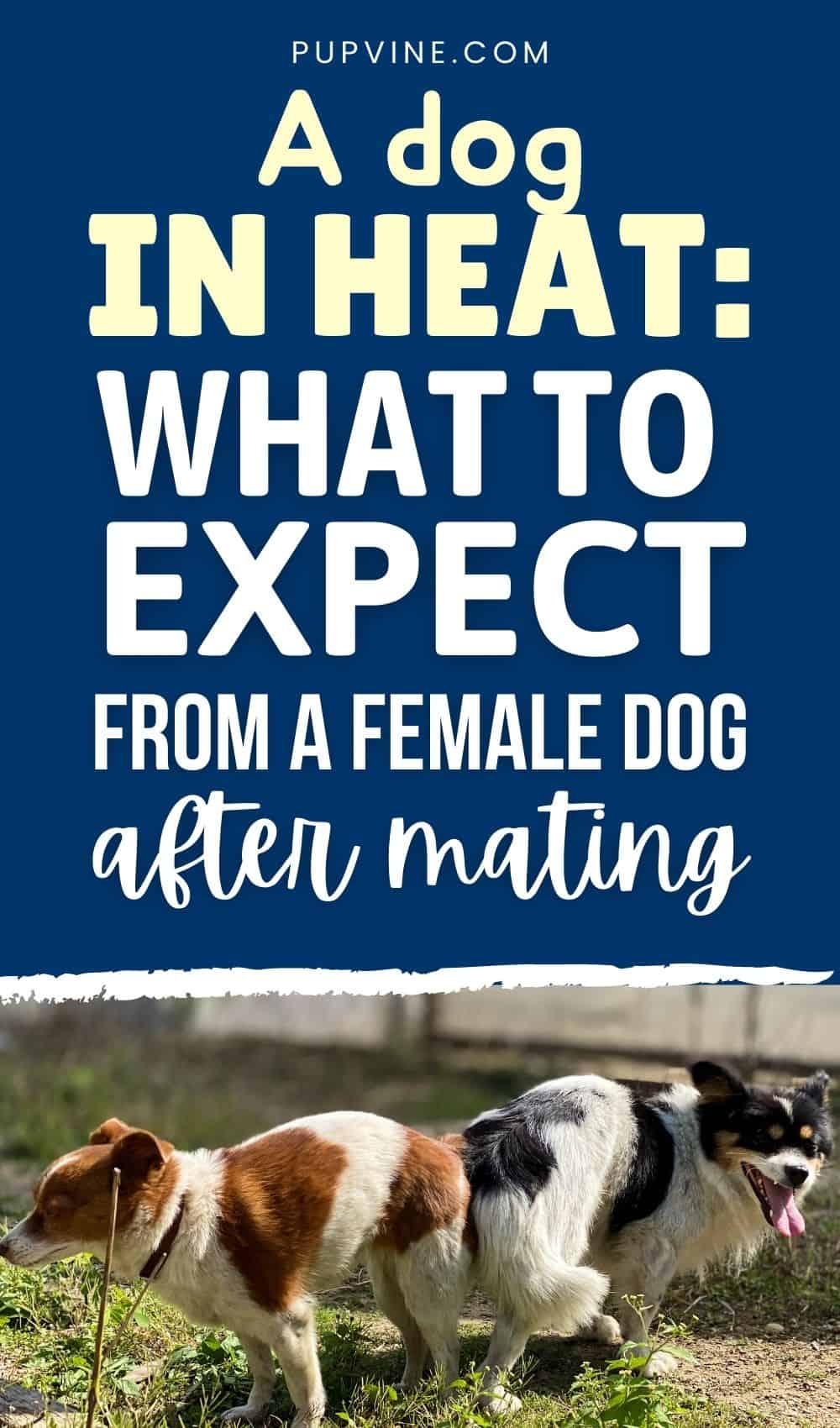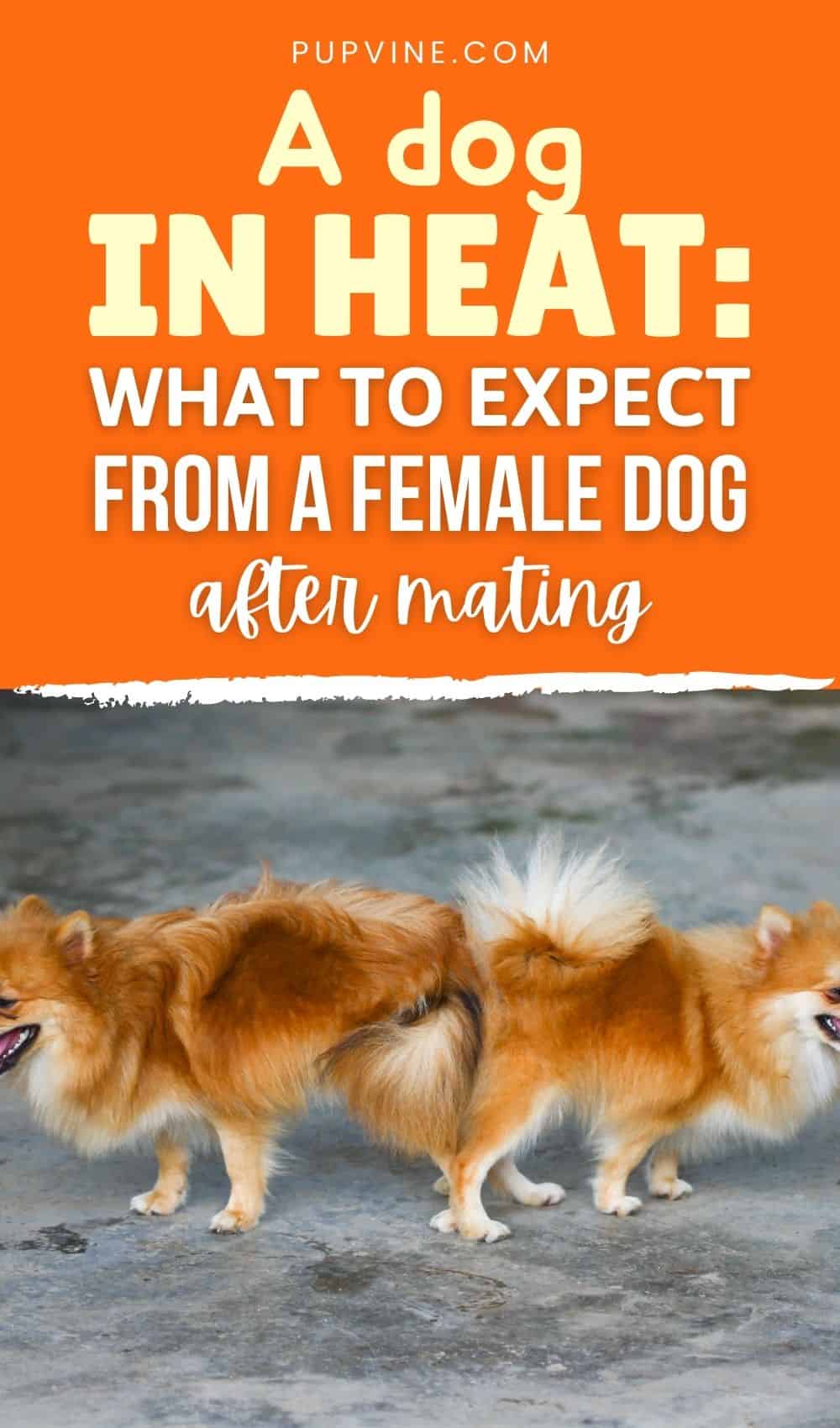Every female dog owner is responsible for the dog’s health, including their reproduction.
Owners who find themselves asking what to expect from a female dog after mating are usually split in two: those who did plan the mating, and those whose dogs had… an accident!
Sometimes, there’s no other way of knowing if your dog is pregnant but to wait for the time for it to show the first signs. What kind of signs, how to deal with the new situation, and how to prepare for the puppies coming your way is something you’re about to learn.
But first, how much do you really know about dog breeding and their heat cycle?
When Can My Female Dog Get Pregnant?

The answer to our burning question: “What to expect from a female dog after mating” is: A LOT. Let’s go straight to the beginning, also known as “the estrous cycle.”
Have you ever heard of the term “being in heat”? Well, of course, you have! It’s the term we dog owners use once every eight months.
This fertile period, the season, lasts up to three weeks, and it’s as turbulent as any cycle women have.
In fact, being in heat has another, more professional term. This stage is also called estrus.
What Should I Know About the Dog’s Heat Cycle?

The sexual maturity or puberty of dogs varies from species to species. Small dog breeds often reach full sexual maturity at only six months of age.
However, large breeds tend to enter puberty sometime after, when they reach eighteen months. Some, even after twenty-four months of age!
These differences continue to carry on when we talk about the number of cycles in one year. Large breeds cycle once a year while smaller ones have their cycle every four months.
Female dogs can have a bit of an irregular heath cycle at the beginning. This is completely natural, and sometimes takes up to two years to stabilize.
To tell if your dog has started the heat cycle, look for the following signs:
• Swelling of the vulva
• Tail flagging in the presence of male dogs
• Friendly approach to male dogs
• Bloody discharge
• Frequent urination
• Licking of the genital area
• Aggressive or nervous behavior
The Four Phases of the Estrus Cycle

The female dog’s estrus or oestrus cycle consists of four phases. They all manifest different changes in behavior and physical characteristics. These four phases are:
• proestrus
• estrus
• diestrus
• anestrus
The proestrus phase lasts for an average of nine days. In this phase, the male dogs are attracted to females, but the females are not responsive.
This is a phase at which estrogen levels are at their peak, and the follicles begin to develop. Swelling of the vulva and bloody discharge are other signs.
The estrus phase is a phase of receptiveness. This is also a point at which a fertile window opens, and the progesterone level begins to rise. Learn more in our dog progesterone level chart.
The phase following the estrus is named diestrus. Its distinctiveness is that the female is no longer receptive. The phase lasts for two months, and an increase, then a decrease in progesterone levels occurs.
In the anestrus phase, the vulva is no longer swollen, and there’s no more discharge. The anestrus phase lasts for four months, and it’s marked as the time between diestrus and the next proestrus.
The Signs of Estrus
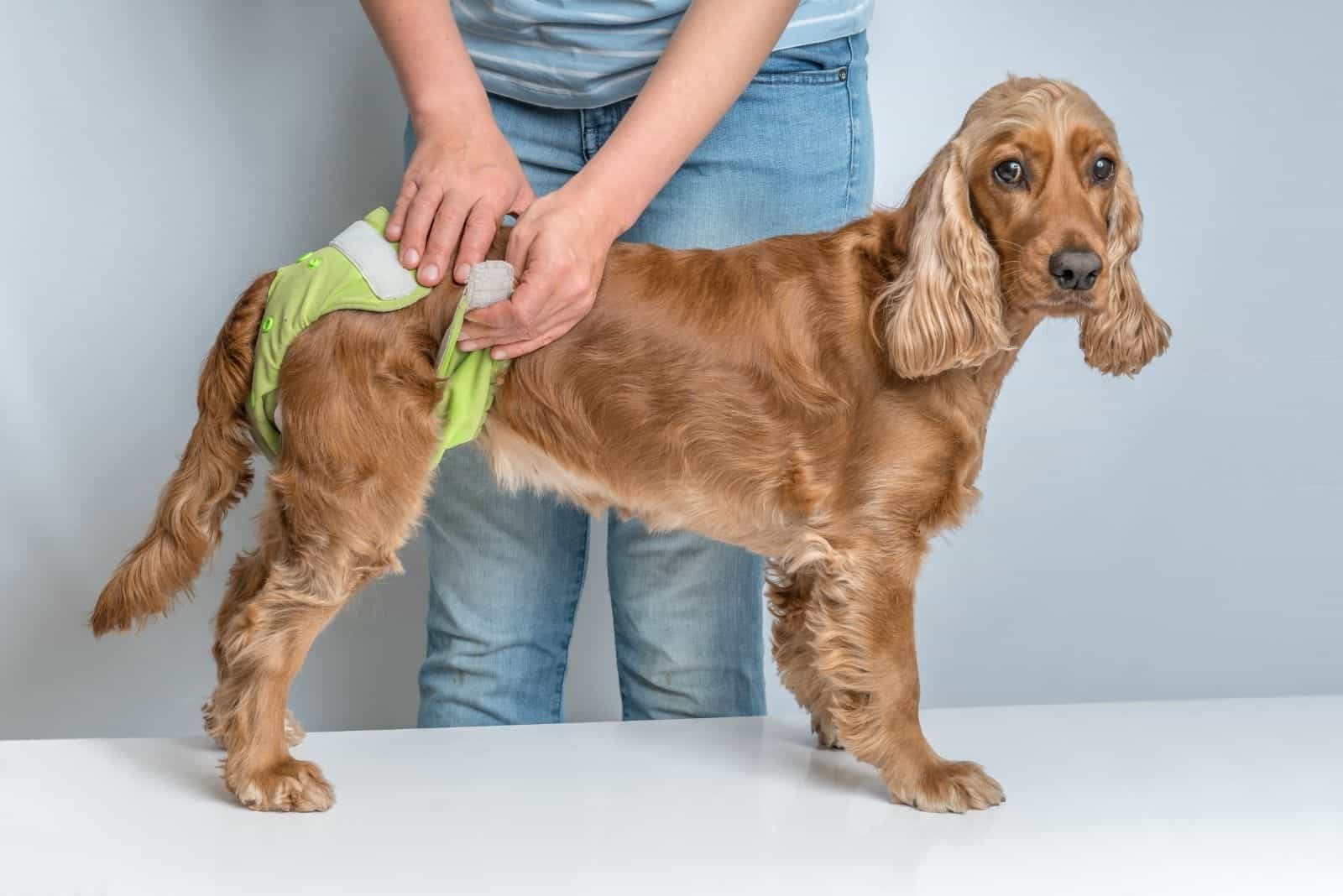
We have learned from experience that it’s not always what the books say it will be.
The engorgement or the swelling of the dog’s vulva is a textbook example of estrus. However, many female dogs seem to experience a bloody vaginal discharge as the first sign.
This discharge should be visible a few days after the estrus has begun.
The amount of discharge varies from dog to dog. The variations are notable when it comes to its color, too. The colors go from very bloody to quite watery and pink-red.
Another distinctiveness of the estrus period is that the female dogs develop a marking style when urinating. Their urine contains pheromones and hormones that male dogs can detect from miles away.
There is no rule for how long the estrus phase lasts. Generally, the estrus phase lasts for one and a half to two weeks, but it can be shorter or longer.
The female dog’s ovulation happens at the time the vaginal discharge becomes watery and pinkish red.
Still, the female can become pregnant at any time of the estrus phase since the male dog’s sperm can last about a week in the reproductive tract.
During the act of coitus, dogs can get into a copulatory tie, but that too isn’t an exact rule.
The tie happens when the male’s bulbus glandis expands to keep the semen secured inside after he ejaculates. The duration of the tie varies: from five minutes to even one hour!
Dog Breeding: Planned or… an Accident?
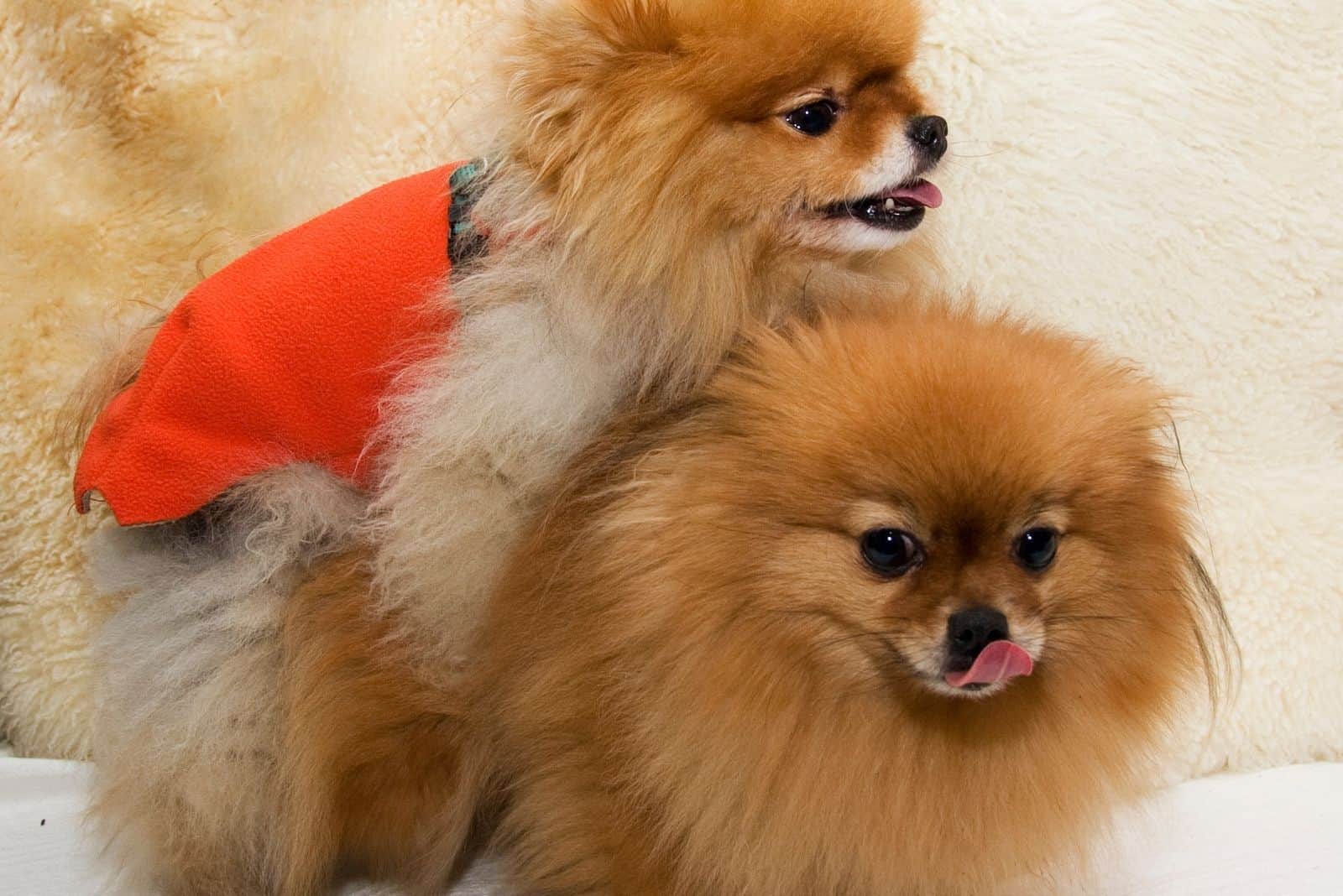
So, what do you expect from a female dog after mating? Well, pregnancy in over 40% of the cases!
Planned dog breeding must be conducted in a secure setting. That means eliminating every chance any other male dog could inseminate your bitch.
Yes, even though planned mating happens, a bitch could get pregnant with another dog if left unattained.
The oestrus phase continues for several more days, so make sure you keep a record of your dog’s mating sessions.
Post-coital circumstances should guarantee a safe and quiet environment for the female dog to rest.
How Can You Immediately Tell Your Dog Has Mated?

Are you not planning dog breeding, but your dog is in her heat cycle? Pay attention to male dogs around your bitch. This is the time when she shouldn’t be left alone. Always keep her on a leash during such days or in a locked yard.
However, accidents do happen. Dogs sometimes run away, especially when hormones are this wild. Here’s how to spot the signs if your dog has just mated.
First, you should notice a lot of moisture on your dog’s hair. That’s the result of wooing, meaning the male dog licked her to get her in the mood.
The hair on her head and down the back could also be matted and wet from the male’s saliva.
One of the best indicators that mating just occurred is the male’s arousal. Depending on how early or late you arrive, the male’s penis should still be erect and larger than usual.
But, the sign you definitely can’t miss is the smell from your dog’s rear end. The strength of it varies from extremely sharp to mild, and it is only noticeable when you get near.
These are the signs that could be seen immediately upon mating, but some begin to show a while later.
First, the female dog could become unfriendly towards other males. She can also tend to sleep more and act lethargic.
Your dog may experience some post-coital discomfort, especially if it was her first time. If she keeps on walking rather funny, you should see a vet. Of course, the biggest sign your dog has mated is… pregnancy!
Read Also: Tips And Tricks On How To Get Dogs Unstuck During Mating
The Turbulent Gestation Period: How do You Tell if You Have a Pregnant Dog?
The early signs of pregnancy are hard to detect. There are no certain methods other than the trans-abdominal palpation for uterus enlargement to check if the dog is pregnant.
This method can be conducted about three to four weeks after the mating, but it still depends on a large factor. Only if the female is relaxed, the result of the palpation could be true.
Nevertheless, abdominal ultrasound is currently the safest choice one could take. The ultrasound is possible from four weeks of pregnancy onward. Yet, the ultrasound method isn’t capable of detecting the exact number of fetuses.
To see how many puppies you’re expecting, you will have to wait for the end of the dog’s pregnancy. Around week seven, just two weeks before the whelping, an X-ray or an abdominal radiograph could tell the correct number of puppies.
One should always take the dog for an X-ray to avoid any puppies being left trapped inside the mother.
Nowadays, there is a method much more precise at the early stage than palpation. Female dogs can take a blood test that measures the level of relaxin. Relaxin is a hormone produced by the developing placenta.
The relaxin test can be done as early as 22 to 27 days after dog breeding. A positive result means the dog is pregnant without any doubt.
A negative test could occur if the blood test was done too early after mating. Usually, it’s suggested you repeat the test twice, within a week apart, especially when the conception date is unknown.
If any of these tests come back positive, congratulations! Your face will be covered in puppy kisses in about sixty-one to sixty-five days!
Change of the Routine: The Future Mommy Dog’s Health
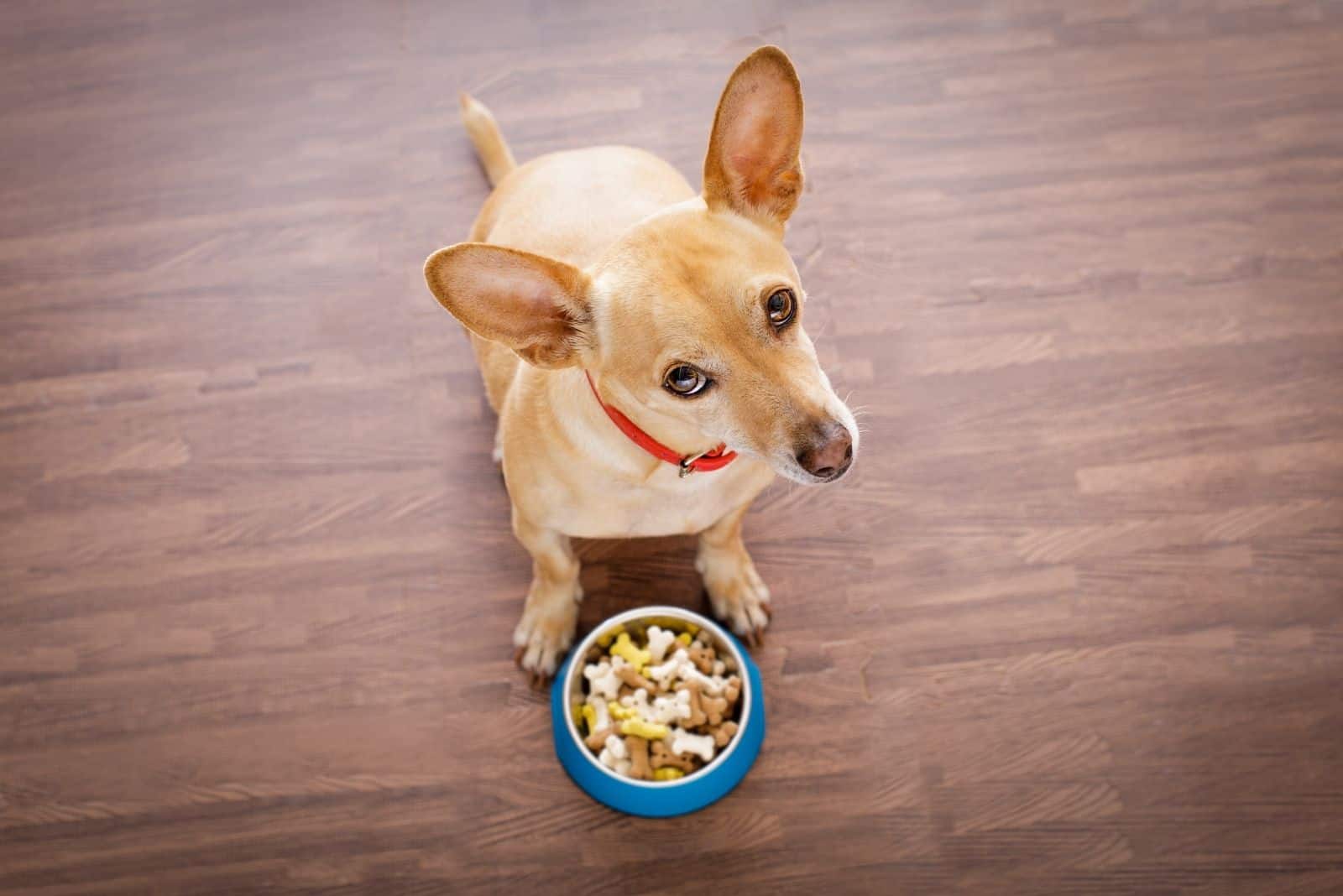
Pregnancy is a huge change every bitch goes through and, of course, there should be some changes in her daily routine. At first, there will be no changes in the quality and in the number of her meals.
As the pregnancy advances, some changes in the dog’s body happen. The intra-abdominal pressure increases and so does the dog’s need for extra food.
Giving your dog growth food or performance food is the best choice you can make. These kinds of food are rich in nutrients relative to their calorie count.
Since the progress of pregnancy means the growth of the uterus, a change will be noticeable in the quantity of a single meal.
The uterus begins to take much more space, so she might experience trouble eating the same amount of food as she did before.
To avoid such difficulties, ensure your dog eats more small meals throughout the day. This change happens after the sixth week of pregnancy.
A dog should not get obese during pregnancy as this situation causes problems with whelping, meaning stillbirths and birth defects.
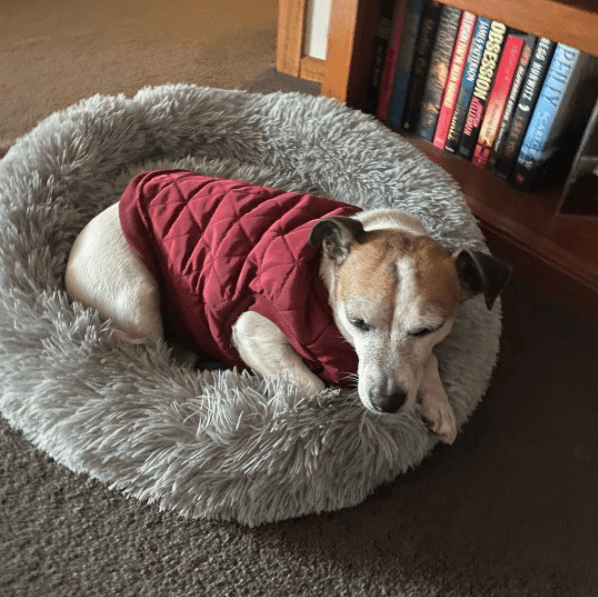
Photo from: @mollytk_mileysk
A dog shouldn’t be underweight either in order to avoid pregnancy losses.
The ideal increase of the weight should be from five to ten percent more than before the dog breeding.
Three weeks before whelping, you can increase the meals by one and a half times the normal level.
As for the medications a dog could take, talk to your vet. Some medications shouldn’t be used, even though they’re common, so make sure you check first.
Keeping your dog active during pregnancy is recommended, but don’t go too overboard. She’s the boss now and she decides how much exercise should be done.
Never over-exercise a pregnant bitch, and be on the lookout for any possible vaginal discharge.
It’s Labour Time: Whelping 101
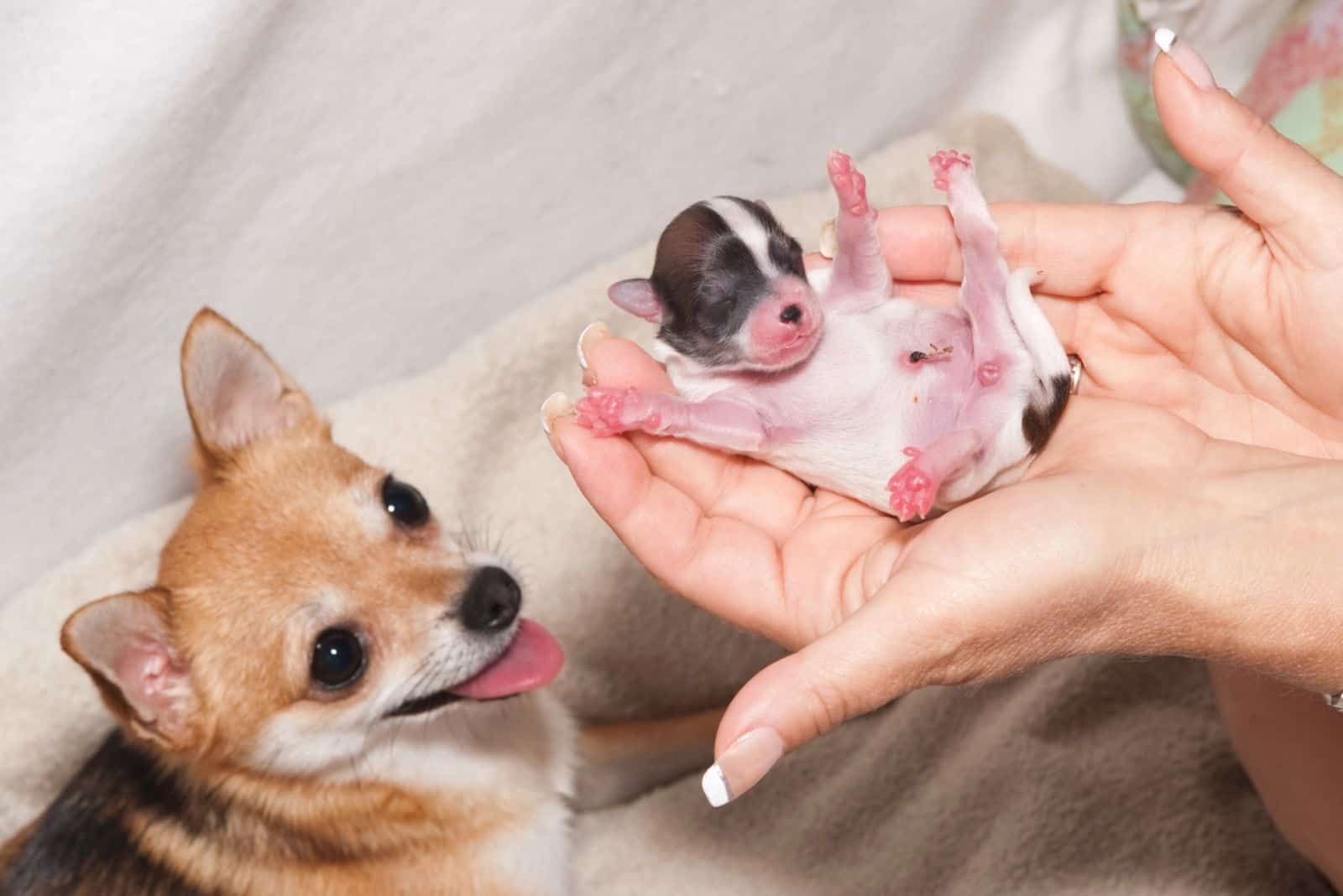
There are some clear signs that a dog is going into labor.
Just like humans, before giving birth, female dogs go through a nesting phase. This is where you can show your usefulness and build a warm and secluded area for your dog to give birth to the puppies.
Dogs are supposed to handle the labour all by themselves, but despite that fact, the presence of their beloved human being is highly recommended. God forbid something goes awry!
In such dramatic cases, keep your head clear and look for the following signs:
• It has been 24 hours since the dog’s temperature dropped, and she still hasn’t gone into labor
• The contractions are in the correct time span, but the mom still hasn’t given birth to any puppies
• There is a green, red, or brown vaginal discharge and no puppies within two to four hours
• The dog is relaxing or having weak contractions for more than two hours between puppies
• The mom fails to deliver despite the straining, and you see a puppy at the vulval entrance
• The second stage of labor, when the puppies are born, lasts for more than twelve hours
Even though the whelping may go as planned, it’s the second phase that can cause additional difficulties. Stay alerted if:
• You suspect there might be a problem with a retained placenta since there should be as many placentas as there are puppies
• Your dog shows signs of nervousness and experiences small seizures or twitching, which can be a symptom of calcium deficiency
• Your dog has a high fever, lack of appetite, and shows no interest in newborn puppies, which indicates there’s a uterus infection
• Your dog keeps on straining even after all the puppies have been born
• The dog’s mammary glands are red and painful and have a smelly brown or blood red discharge
• Her vaginal discharge is not black/red as it should be after giving birth; it’s foul-smelling and very bloody
• More than one puppy has died
• The other puppies seem to be passive about feeding
Such cases demand urgent vet intervention.
If the whelping goes well, the puppies should nurse immediately after all of them have been born. It is of great importance for them to receive colostrum.
Colostrum is the first milk that mammary glands produce, and it is rich in antibodies that help to fight against diseases.
Colostrum should be absorbed within 24 hours after whelping, so make sure the pups nurse.
Welcome The Little Ones: The Litter
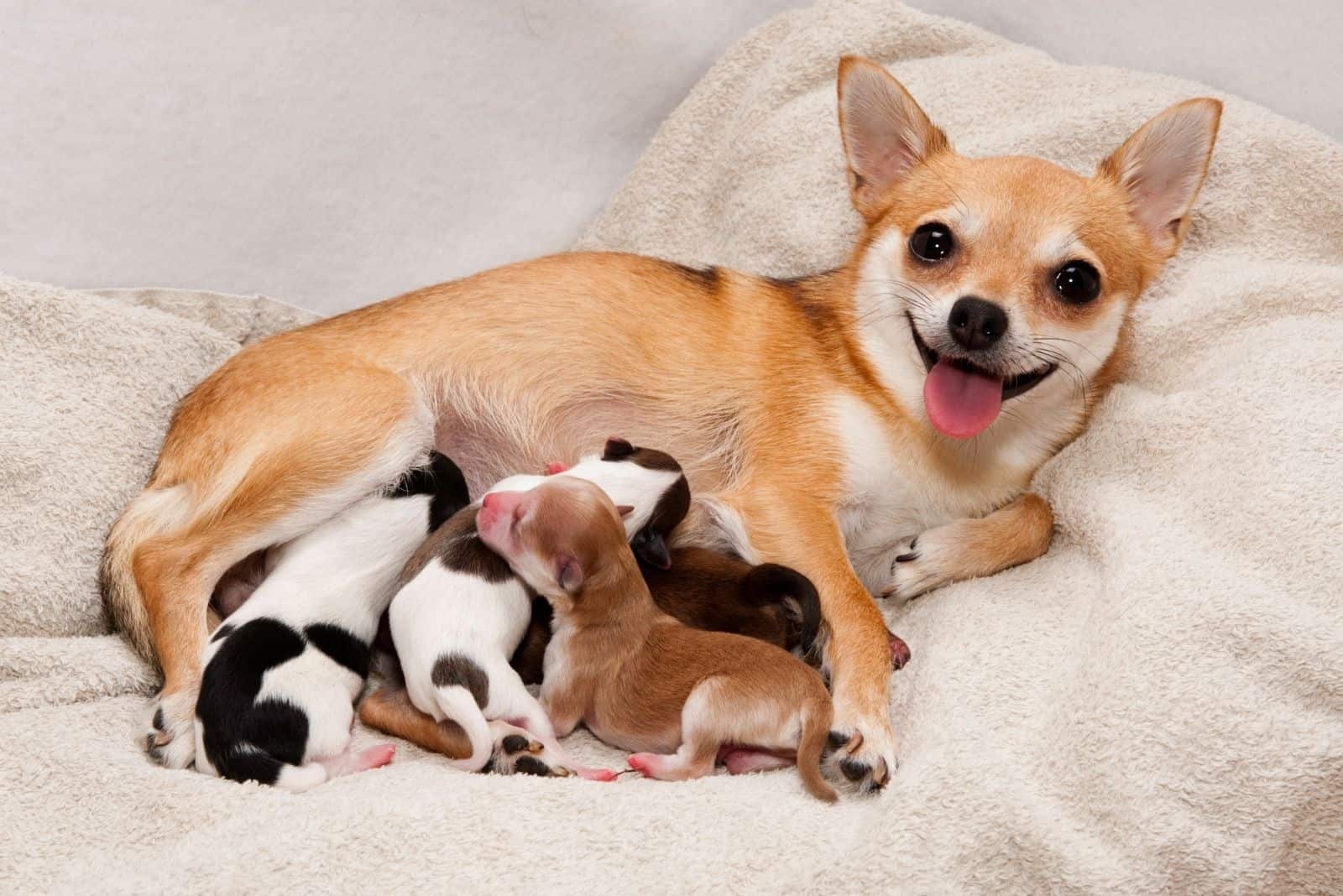
Having a healthy litter size depends on many factors. Some of them happen even before the dog breeding. The optimal breeding day is two days post-ovulation.
Mating outside this window is one of the major reasons why your dog has a small litter. Other reasons include health conditions like hypothyroidism, uterine infection, or it can be caused by the dog’s old age.
Every healthy litter has a different size depending on the species, but all dogs have one thing in common: They are born as mammals to nurse their young ones.
The mammary glands need plenty of fresh water and appropriate food for normal lactation. A lactating mom dog should always have a secure place… a big and warm box, with plenty of food and water to nurse her babies.
There’s no such thing as too much food for a nursing momma dog!
In the first four weeks of their lives, the puppies should stay away from noise and nosy visitors like other pets and people. Otherwise, the mother could feel stressed and endangered.
Puppies nurse a lot during the day, and one session can last up to 45 minutes. Never interrupt a nursing dog, and always be prepared to give puppies a bottle of puppy milk formula if the mom is away for more than three hours.
After week four of nursing, weaning should be done gradually. You should introduce the pups to solid foods like a warm can of wet food or granulated food mixed with mild water.
Step by step and your puppy will successfully end the weaning process and start its way towards adulthood.
There you have it: Everything you need to know about what to expect from a female dog after mating. Now, there’s no way you can’t be prepared for an upcoming litter, no matter if it’s planned or not.
Read Next: Signs That A Male Dog Wants To Mate
